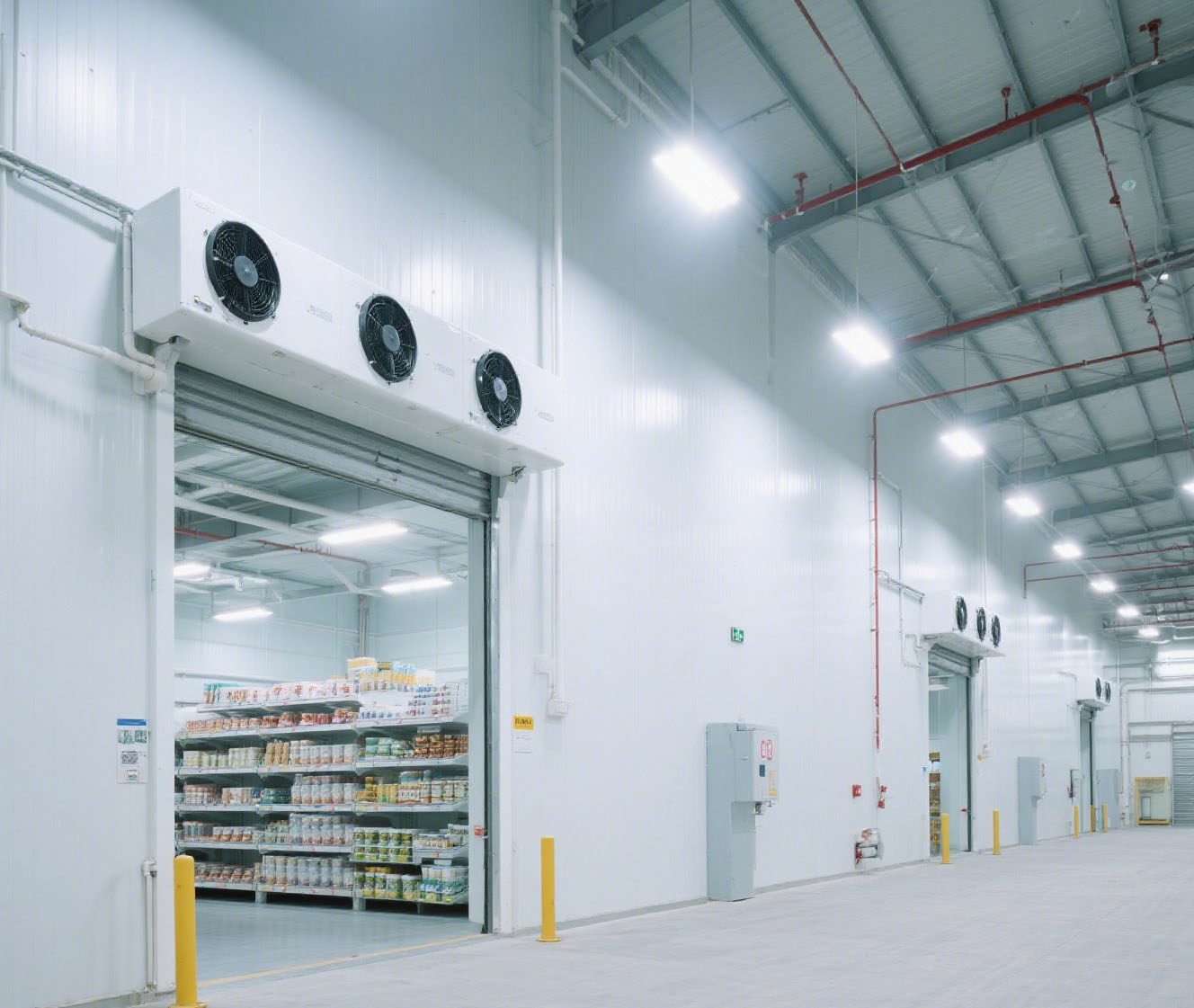Overview of Humidity Control in Food Freezing Storage
In food freezing storage (≤ –18 °C), maintaining precise humidity levels is as vital as temperature control to preserve product quality, ensure safety, and optimize operational efficiency tempCubeAPS-IOWA. Any uncontrolled moisture can condense into frost or ice crystals, damaging both food products and refrigeration equipment APS-IOWA. Effective humidity management reduces freezer burn, prevents frost buildup on evaporators, and minimizes defrost cycles, thereby extending equipment lifespan and lowering energy consumption APS-IOWAfisair.com.
1. Impacts of Low Humidity
1.1 Freezer Burn and Dehydration
Freezer burn occurs when moisture sublimates from food surfaces, leading to dry, shriveled patches and textural degradation Healthline.
In meat products, high air velocity or insufficient humidity can substantially increase moisture evaporation and weight loss Meat Update.
1.2 Protective Glazing Techniques
Glazing involves applying a thin layer of ice to frozen products—common for fish and seafood—to form a protective barrier that reduces dehydration and oxidative damage FAOHomeAbout Seafood.
Proper glazing can lower moisture loss during storage, improving sensory quality and yield About Seafood.
2. Impacts of High Humidity
2.1 Frost Buildup and Defrost Cycles
Excess ambient humidity leads to rapid frost accumulation on evaporator coils, interrupting airflow and forcing frequent defrost cycles APS-IOWA.
Frequent defrosting destabilizes storage temperatures and can increase annual energy consumption by 15 %–20 %, driving up operating costs APS-IOWA.
2.2 Microbial Risks and Packaging Integrity
Condensation from high humidity creates a breeding ground for bacteria and mold, posing food safety risks and potential spoilage teddington.com.
Moisture-laden packaging can degrade barrier properties, leading to compromised sterility and accelerated quality loss d2tsmyh31fn7w8.cloudfront.net.

3. Recommended Humidity Ranges by Storage Type
General Freezers (≤ –18 °C): Maintain relative humidity around 50 %–60 % RH to balance frost prevention with moisture retention naisida.net.
IQF Freezers (–30 °C to –40 °C): Target 40 %–50 % RH to facilitate rapid freezing while preserving intracellular moisture and minimizing cell rupture climatronics.in.
Ultra-Low Temperature Storage (–45 °C to –60 °C): Require < 30 % RH to achieve frost-free conditions, prevent sample adhesion, and protect packaging integrity teddington.com.
4. Smart Humidity Management Solutions
4.1 Real-Time Monitoring and Control
Deploy temperature and humidity sensors with ± 2 % RH accuracy, sampling every 1–5 minutes, to detect deviations and trigger automated interventions teddington.com.
Integration with PLC systems allows seamless control of dehumidifiers and humidifiers, maintaining set ranges without manual adjustment teddington.com.
4.2 Frost-Free Design Strategies
Combining dry-air circulation with intermittent hot-gas bypass or electric defrost cycles ensures evaporators remain frost-free while stabilizing humidity levels teddington.com.
Advanced airflow design—such as multi-point supply and return ducts—maintains uniform humidity distribution, eliminating localized hot or cold spots teddington.com.


 Return to List
Return to List
 Phone
Phone